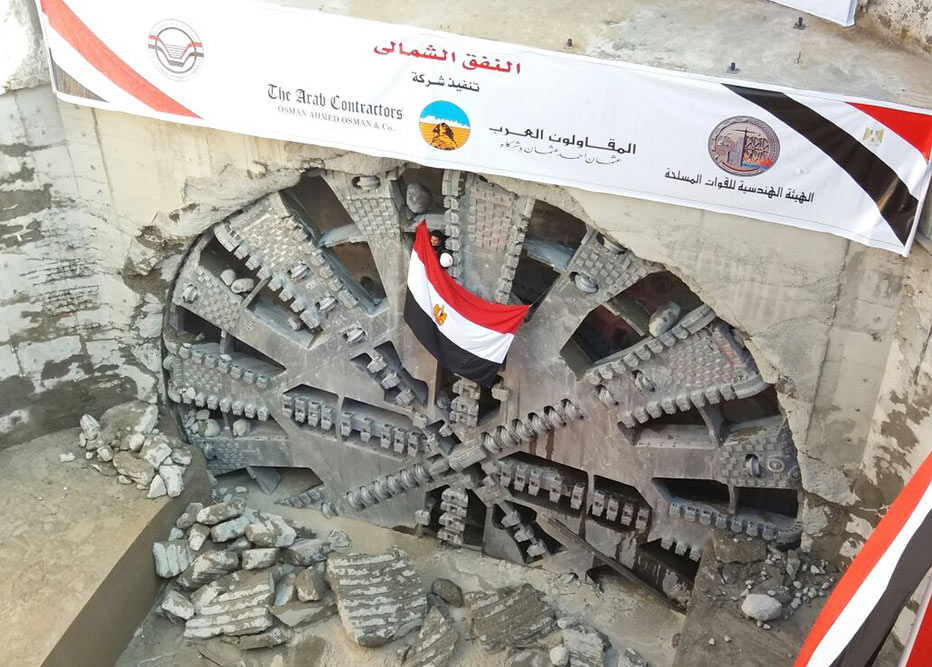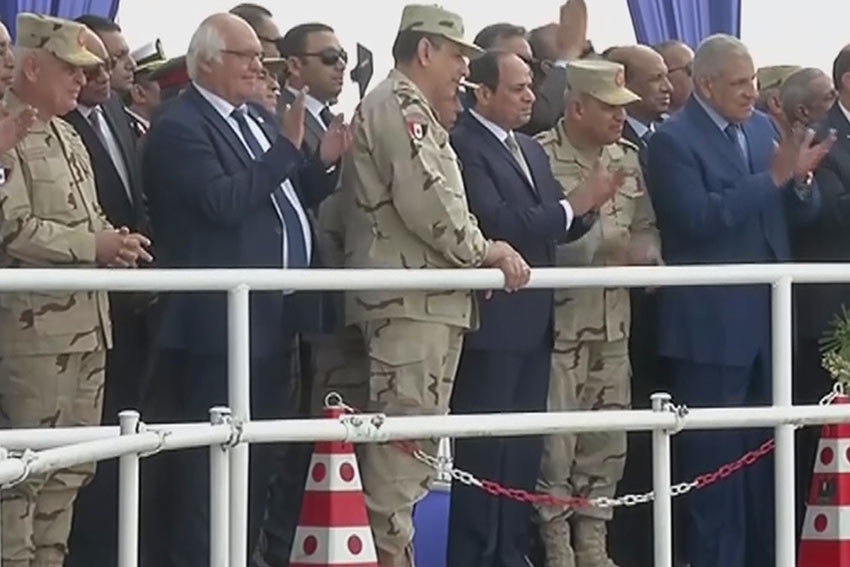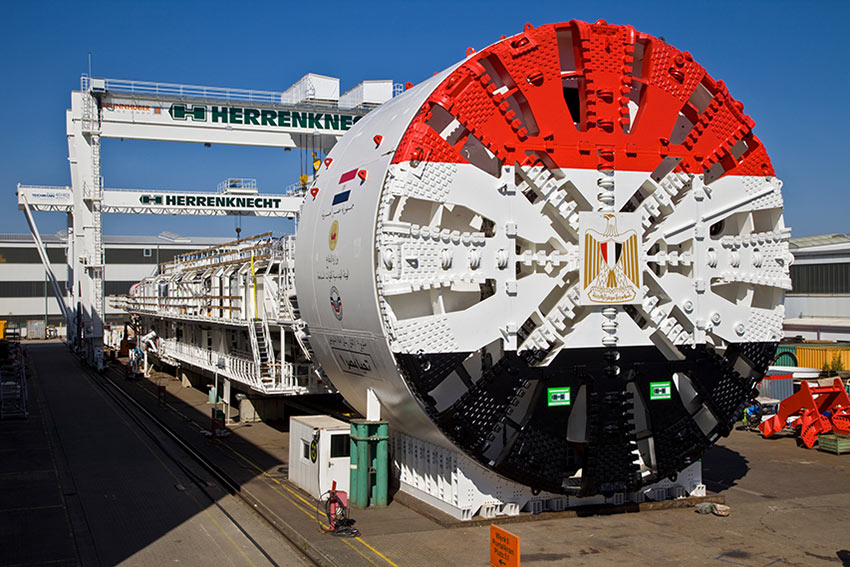Breakthroughs for Suez Canal underpasses 11 Jan 2018
Excavation is complete on the first of two new twin-tube road tunnels being built under the Suez Canal at Ismailia and Port Said in Egypt, to link the Sinai Peninsula with the Nile Delta and provide crucial trade links to support economic development of the region. The third of four 13.02m diameter Herrenknecht Mixshield TBMs completed its 4.8km drive at Ismailia in late December 2017, working at depths of up to 60m and at a water pressure of up to 6 bar. The second of the two Herrenknecht machines at Port Said completed its 2.8km drive in the early days of January 2018.
In total the four identical Mixshields have excavated and built a total of 15.3km of segmentally lined highway tunnelling.
The new tunnels will cut the journey time across the Suez Canal from up to 5 days queuing in traffic to cross by ferry to just 10 minutes via road tunnel. The only current fixed link under the Suez waterway is the 1.63 km long single tube bi-directional two lane Ahmed Hamdi Tunnel at the southern end of the Canal. The tunnel was constructed in the late 1970s by Tarmac Construction of the UK using an 11.6m diameter tunnel shield and erecting a precast concrete segmental lining.
In 1992 the Japanese Government granted aid for rehabilitation of the tunnel. Salty water ingress had corroded the steel rebar reinforcement of the segmental lining. The NCC/Nippon Koei design-build JV of Japan installed a 2mm thick waterproofing sheet inside of the existing tunnel, installed a sump pump drainage system in the base of the tunnel and cast a secondary reinforced concrete lining. With the waterproof sheeting sandwiched in between, the secondary lining was designed to be structurally independent of the existing tunnel.
The four new highway tunnel drives under the Canal were excavated in 19 months by two construction joint ventures, the Arab Contractors/Orascom JV and the Petrojet/Concord/CMC JV. To help the project run smoothly, Herrenknecht trained 40 Egyptian engineers at its headquarters in Schwanau, Germany, and on the jobsites in Egypt to provide on site support. The company also supplied key peripheral equipment through its subsidiaries VMT, MSD, Formwork, H+E and TMS.
Egyptian President Abdel Fattah al-Sisi and Dr Martin Herrenknecht, Chairman of the Board of Management of Herrenknecht, witnessed the final TBM breakthrough of the Mixshield at Ismailia.
In addition to the two new twin tube highway tunnels under the vital manmade waterway and shortest sea route between Europe and Asia, Egypt also has plans to add a single tube double track rail tunnel under the Canal at both locations of the highway underpasses. Additional water supply tunnels are also planned. In the 1990s-early 2000s a set of four steep gradient tunnels to accommodate high-volume water supply pipelines were designed by Halcrow of the UK (now Jacobs) and excavated. Currently, two Herrenknecht HDD rigs are installing pipelines under the Canal for the expansion of the power grid and two AVND machines are managing additional water pipelines for agriculture. TBM tunnelling is also progressing in Egypt’s capital city Cairo for expansion of its metro system.
References
- Cairo metro reaches TBM milestone – TunnelTalk, June 2013
- Boundaries busted for highway under the Bosphorus – TunnelTalk, September 2015
|
|
|
|
|
Add your comment
- Thank you for taking the time to share your thoughts and comments. You share in the wider tunnelling community, so please keep your comments smart and civil. Don't attack other readers personally, and keep your language professional.




